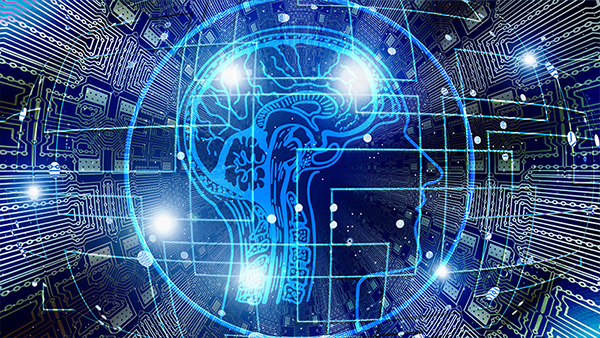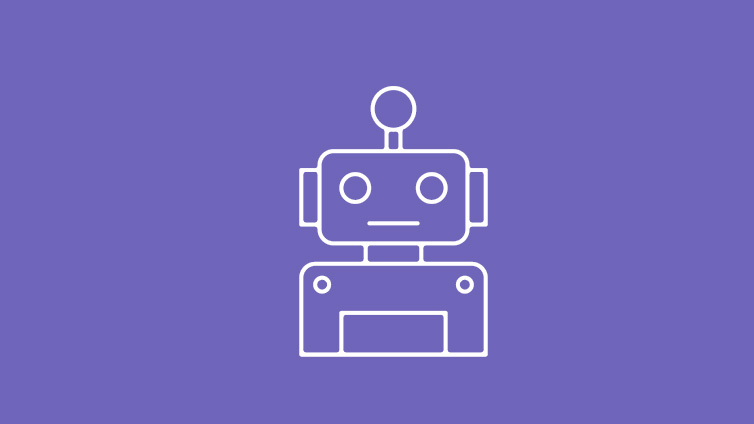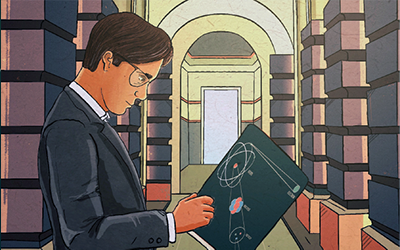Technology
Teacher Resources
Driving Question: How might technology increase complexity?
Technology has come a long way in a relatively short amount of time. While we can’t see the future, we can learn from the past and present to envision what the technology of the future might be.
Learning Objectives:
- Evaluate how technology impacts human societies.
- Explain how technology might impact our future.
Vocab Terms:
- AI (artificial intelligence)
- innovation
- quantum
- technology
Opener: Technology
To teach this lesson step, refer to page 2 of the Lesson 7.4 Teaching Guide.
Join our online teacher community here to engage with other educators about Big History Project.
The technology you use today would bewilder a visitor from two centuries ago. But don’t get too smug—someday it’ll happen to you too!
Future Tech
Ready to take your innovation exploration further? Check out this lesson on climate innovation in OER Project: Climate.
This is one of those steps where we put it all together. Use this article, podcast clip, and activity to see how technology changed the natural world in the past so we can assess what it might do in the future.
-
Guiding Questions
-
Before you read
Preview the questions below, and then skim the article. Be sure to look at the section headings and any images.
While you read
Look for answers to these questions:
- Why is it important to think about the human aspects of technological innovation?
- What are some potential problems with a future where AI replaces a large portion of human labor?
- What are some potential problems with cognitive augmentation?
- What are some potential problems with using geoengineering to combat climate change?
After you read
Respond to this question: What is an example of a technology that we currently have that has a combination of benefits and drawbacks for humans?
We all know how powerful AI can be—but should we be scared of how powerful it might become in the future? Kevin Kelly, senior maverick at Wired magazine, has an answer that might surprise you.
Closer: Technology
Human vs. AI: Predicting Future Tech
- Students ask AI the same question they responded to in the Visions of the Future: Tech closer: What do you think will be the most significant impact of technology in the future? Why?
- Don’t let students just accept the AI answer. Ask them to compare:
- “Where did you think more creatively?”
- “What assumptions did the AI make?”
- “Which reasoning process was more thorough?”
Why this works: Watch students’ confidence soar as they discover their human (and collaborative) edge.
Technology has gotten humanity out of a lot of jams before. Let’s consider some positive possibilities.
The Quantum Scientist
To teach this lesson step, refer to page 4 of the Lesson 7.4 Teaching Guide.
Comics in the classroom? Check out our Graphic Biographies Lesson Plan for guidance on using Graphic Biographies.
Satyendra Nath Bose and Albert Einstein collaborated, and together they changed our fundamental understanding of matter and how our Universe works.
-
Guiding Questions
-
Before you read
Preview the questions below, and then skim the comic, paying attention to things like prominent colors, shapes, and types of text and fonts. How do you know where to start and in which direction to read? What’s in the gutters (the space between panels)? Who or what is the focus of the comic?
While you read
Look for answers to these questions:
- Why does this graphic biography assume you have not heard of Bose?
- What were Bose’s two main discoveries?
- What was Bose’s primary way of communicating with other physicists?
- What are some of the ways Bose’s contributions to science are used today?
- How does the illustration of this graphic biography show the relationship between Bose and Einstein?
After you read
Respond to this question: How might the work of Bose influence what the next threshold might be?
Optimism and a 100-Year Future
Hollywood movies tend to focus on the dangers of technological innovation but there’s a good reason to be optimistic about the future of technology.
Key Ideas
-
Guiding Questions
-
Before you listen
Preview the questions below, and then review the transcript.
While you listen
Look for answers to these questions:
- Why does Kevin Kelly choose to be optimistic about the future?
- Why might things seem familiar to us when we think about what the future holds in 100 years’ time?
- How does Kevin Kelly think agriculture might change in the next 100 years?
After you listen
Respond to these questions: Do you agree with Kevin Kelly that we should be optimistic about the future of technology? Why or why not?





